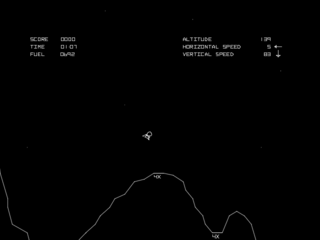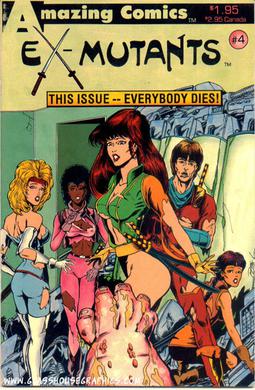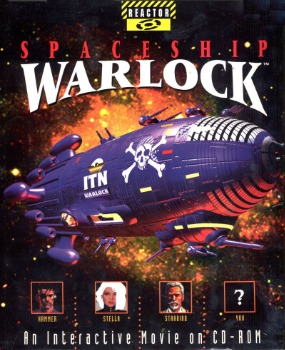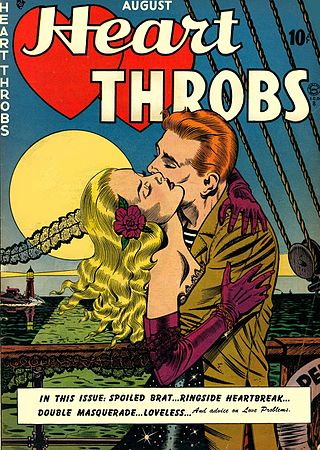Infocom was an American software company based in Cambridge, Massachusetts, that produced numerous works of interactive fiction. They also produced a business application, a relational database called Cornerstone.

Alternative comics or independent comics cover a range of American comics that have appeared since the 1980s, following the underground comix movement of the late 1960s and early 1970s. Alternative comics present an alternative to mainstream superhero comics which in the past have dominated the American comic book industry. Alternative comic books span a wide range of genres, artistic styles, and subjects.

Lunar Lander is a genre of video games loosely based on the 1969 landing of the Apollo Lunar Module on the Moon. In Lunar Lander games, players control a spacecraft as it falls toward the surface of the Moon or other astronomical body, using thrusters to slow the ship's descent and control its horizontal motion to reach a safe landing area. Crashing into obstacles, hitting the surface at too high a velocity, or running out of fuel all result in failure. In some games in the genre, the ship's orientation must be adjusted as well as its horizontal and vertical velocities.

Skeletal animation or rigging is a technique in computer animation in which a character is represented in two parts: a surface representation used to draw the character and a hierarchical set of interconnected parts, a virtual armature used to animate the mesh. While this technique is often used to animate humans and other organic figures, it only serves to make the animation process more intuitive, and the same technique can be used to control the deformation of any object—such as a door, a spoon, a building, or a galaxy. When the animated object is more general than, for example, a humanoid character, the set of "bones" may not be hierarchical or interconnected, but simply represent a higher-level description of the motion of the part of mesh it is influencing.

Malibu Comics Entertainment, Inc. was an American comic book publisher active in the late 1980s and early 1990s, best known for its Ultraverse line of superhero titles. Notable titles published by Malibu included The Men in Black, Ultraforce, and Night Man.

Shatter is a comic created by Peter B. Gillis and Mike Saenz, and published by First Comics. The comic is dystopian science fiction fantasy somewhat in the mold of Blade Runner, "We Can Remember It for You Wholesale", and other cyberpunk stories. Shatter was written by Gillis and illustrated directly on a computer by Saenz.

Virtual cinematography is the set of cinematographic techniques performed in a computer graphics environment. It includes a wide variety of subjects like photographing real objects, often with stereo or multi-camera setup, for the purpose of recreating them as three-dimensional objects and algorithms for the automated creation of real and simulated camera angles. Virtual cinematography can be used to shoot scenes from otherwise impossible camera angles, create the photography of animated films, and manipulate the appearance of computer-generated effects.
Digital puppetry is the manipulation and performance of digitally animated 2D or 3D figures and objects in a virtual environment that are rendered in real-time by computers. It is most commonly used in filmmaking and television production but has also been used in interactive theme park attractions and live theatre.

Dragon Spirit is a 1987 vertical-scrolling shooter arcade game developed and published by Namco. In North America, it was distributed by Atari Games. Controlling the dragon Amur, the player must complete each of the game's nine areas to rescue the princess Alicia from the demon Zawell. Similar to Namco's own Xevious, Amur has a projectile weapon for destroying air-based enemies and a bomb for destroying ground enemies. It ran on the Namco System 1 arcade board.

The Incredible Hulk: The Pantheon Saga is a 1997 beat 'em up video game developed by Attention to Detail and published by Eidos Interactive for the PlayStation and Sega Saturn. The game is based on the Marvel Comics superhero Hulk, who must traverse through a series of levels and destroy enemies with an assortment of offensive and defensive maneuvers. The game features visuals created on Silicon Graphics workstations and a plot based on the Pantheon storyline from the comics. The narrative revolves around the Hulk joining the titular superhero team and fighting such adversaries as Piecemeal, Trauma, and the U-Foes. The game was negatively received for its gameplay, controls, visuals, and music, and has been ranked among the worst superhero-based video games.

Ex-Mutants was a comic book series created by writer David Lawrence and artist Ron Lim, along with comics packager David Campiti in 1986. It was first published by Eternity Comics and then Amazing Comics, Pied Piper Comics, and finally Malibu/Eternity. Malibu created a shared universe called Shattered Earth with the characters. In 1992, Malibu comics rebooted the franchise with a new continuity. A video game for the Sega Genesis based on the rebooted version was released in 1992, being developed by Malibu Interactive and published by Sega of America, Inc.

Spaceship Warlock is an adventure game created by Mike Saenz and Joe Sparks. The game was released in 1991 for the Macintosh and in 1994 for Windows.
Saturnino "Pepe" Moreno Casares is a Spanish comic book artist, writer and video game developer who has been drawing professionally in Spain, other countries in Europe and in the US since the 1970s. He is best known in the United States for his 1990 digital graphic novel, Batman: Digital Justice, published by DC Comics.
The history of computer animation began as early as the 1940s and 1950s, when people began to experiment with computer graphics – most notably by John Whitney. It was only by the early 1960s when digital computers had become widely established, that new avenues for innovative computer graphics blossomed. Initially, uses were mainly for scientific, engineering and other research purposes, but artistic experimentation began to make its appearance by the mid-1960s – most notably by Dr. Thomas Calvert. By the mid-1970s, many such efforts were beginning to enter into public media. Much computer graphics at this time involved 2-D imagery, though increasingly as computer power improved, efforts to achieve 3-D realism became the emphasis. By the late 1980s, photo-realistic 3-D was beginning to appear in film movies, and by mid-1990s had developed to the point where 3-D animation could be used for entire feature film production.

Heart Throbs was a romance comic published by Quality Comics and DC Comics from 1949 to 1972. Quality published the book from 1949–1957, when it was acquired by DC. Most issues featured a number of short comics stories, as well advice columns, text pieces, and filler. The long-running feature "3 Girls—Their Lives—Their Loves", drawn by Jay Scott Pike and inked by Russ Jones, ran in Heart Throbs from 1966–1970.

M.A.S.K. is a media franchise created by Kenner. The main premise revolved around the fight between the titular protagonist underground task force and the criminal organization V.E.N.O.M.. After its initial launch in 1985, the franchise spawned a variety of products and presentations, including four series of action figures, an animated television series, video games, comics, and a live-action theatrical film currently in development by Hasbro Studios and Paramount.
Hell Cab is a 1993 adventure video game developed by Digital Fusion and published by Time Warner in 1993 for Macintosh, Windows 3.x.
VPL Research was one of the first companies that developed and sold virtual reality products. It was founded by computer scientist Jaron Lanier in 1984. "VPL" stood for "Virtual Programming Languages". In 1990, VPL Research filed for bankruptcy and in 1999 all of its patents were bought by Sun Microsystems.
MacPlaymate is an erotic computer game released for the Macintosh by PEGASUS Productions in 1987. Developed by Mike Saenz, the game is an interactive erotica where the player can sexually interact with the female avatar Maxie in a variety of ways.
Lunar Rescue is a side-scrolling shoot 'em up Lunar Lander game developed by Practical Computer Applications, Inc. and released for Macintosh in 1988 by XOR Corporation. It was written by Richard Nygord with art and animations by Mike Saenz.










